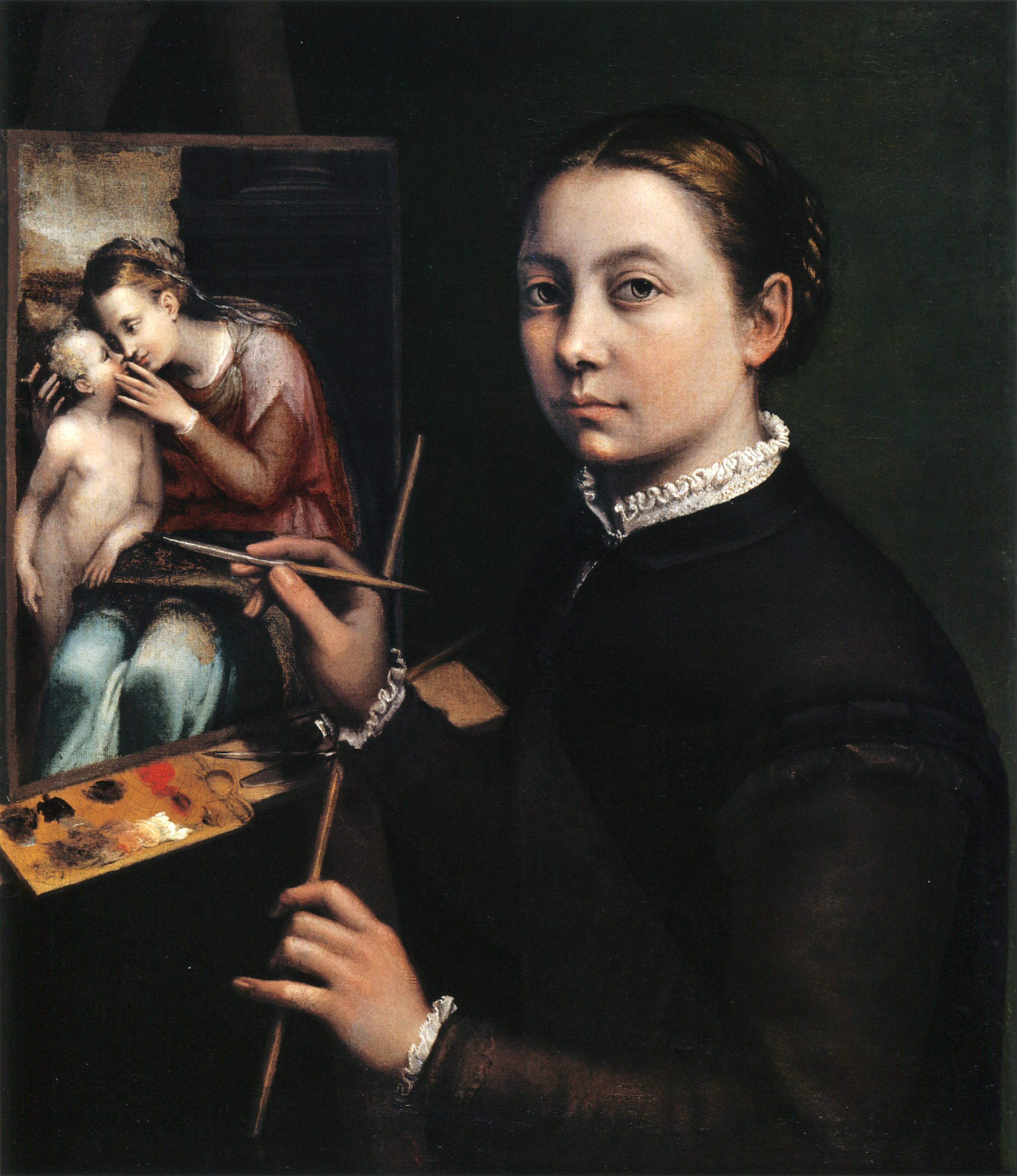During the Renaissance era, making your mark as a painter in a patriarchal society dominated by male artists, was not an easy task. However, one woman who broke the glass fresco was an Italian Renaissance painter, Sofonisba Anguissola. The eldest of five daughters, Sofonisba's father encouraged his daughter to pursue and develop her talents as an artist.
At 22, she traveled to Rome where her sketches caught the eye of Michelangelo; he realized Sofonisba had real talent and spent the next two years teaching and guiding her. As word spread of her exceptional talent, she was soon appointed to the court of King Phillip of Spain in 1559 where she became a lady-in-waiting to Queen Elizabeth Valois and later the official court painter, no small feat for a woman of this era. Later King Phillip helped arrange an aristocratic marriage for Sofonisba but this did not diminish her artistic drive and she continued to pursue her work as a painter. In addition to being recognized by Michelangelo and royalty, she was asked by Pope Pius IV to paint a portrait of Queen Elizabeth just for him.
In Self Portrait at The Easel, oil on canvas, we see Sofonisba seated at the easel in front of her painting of Jesus and Mary. This painting shows that she is not only an exceptionally skilled painter but also highlights her religious nature and devotion. Her maulstick, used to support the hand while painting, and her paintbrush form a cross; the paintbrush points to the figure of Jesus. It is as if Sofonisba is leading us away from her figure in the forefront to put the focus on the religious scene; this shows Sofonisba's humility and re-focuses the viewer on what she feels is the most important image in the portrait, not herself but Jesus and Mary.
Sofonisba never became as famous as her male counterparts but she did pave the way for other women of her era and beyond to become serious art students and artists. Sofonisba lived a long life, died at age 93 and left behind a substantial collection of her work that can be found in museums across Europe.
Heidi Werber


 Sofonisba Anguissola
Sofonisba Anguissola